
TransPac Record Crushed!!!
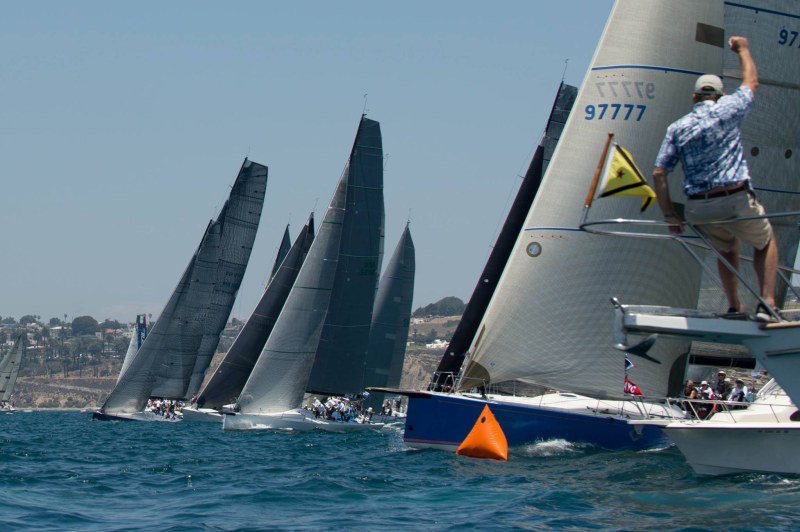
A brilliant new record has been set in the TransPac — ‘The Best 24-Hour Run for a Boat with a Built-In Pizza Oven That Is Starting a Circumnavigation’. That’s correct, our fun-loving young St. Barth friend Lloyd Thornburg and top crew aboard his rust-colored Morrelli & Melvin designed Gunboat 66 Phaedo has turned in a 24-hour run of 427 miles! (Their 24-hour roll call-to-roll call time distance was 416 miles.) Their top speed was just over 28 knots.
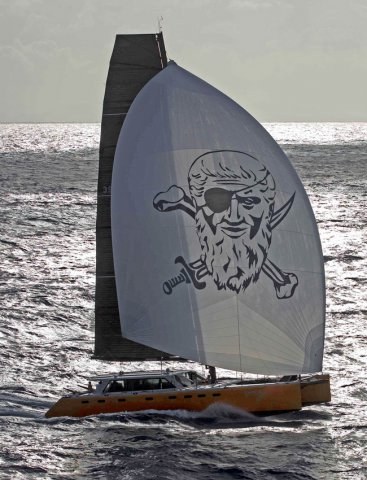
©2013 Latitude 38 Media, LLC
Thornburg has really moved up in performance from the days he sailed a Pacific Seacraft 24, Bristol Channel Cutter 28, and a Soling out of Marina del Rey while he was a student at the Art Center College of Design in Pasadena. And that wasn’t too many years ago. He’s already raced Phaedo across the Atlantic three times, done the Fastnet Race (and stood by after Rambler 100 flipped) and several Caribbean 600s. And yes, the cruising cat does fly a-hull. Paul Hand is the boat’s skipper, and for the TransPac they’ve taken on around-the-world multihull vet Brian Thompson, formerly of Sausalito, and several other pros.
As fast as Phaedo has been sailing, her designer, Newport Beach’s Gino Morrelli, is 150 miles ahead aboard John Sangmeister’s Long Beach-based 72-ft trimaran Lending Club (née Tritium). The tri is the bare-bones all-out racing machine fashioned from the skeleton of an ORMA 60. She was previously used by the Artemis America’s Cup team. Lending Club turned in a 446-mile 24-hour run. Sangmeister’s goal to is crush the TransPac’s elapsed-time record.
UPDATE, 5 P.M. MONDAY — Oops. We’ve just learned that Phaedo dismasted this afternoon. Although we don’t have complete details yet, we do know that she was running downwind under a large spinnaker, with Thomburg at he helm. He suddenly heard a loud cracking sound and the stick came down. Luckily, no one was injured. We hope to bring you a further update tomorrow.
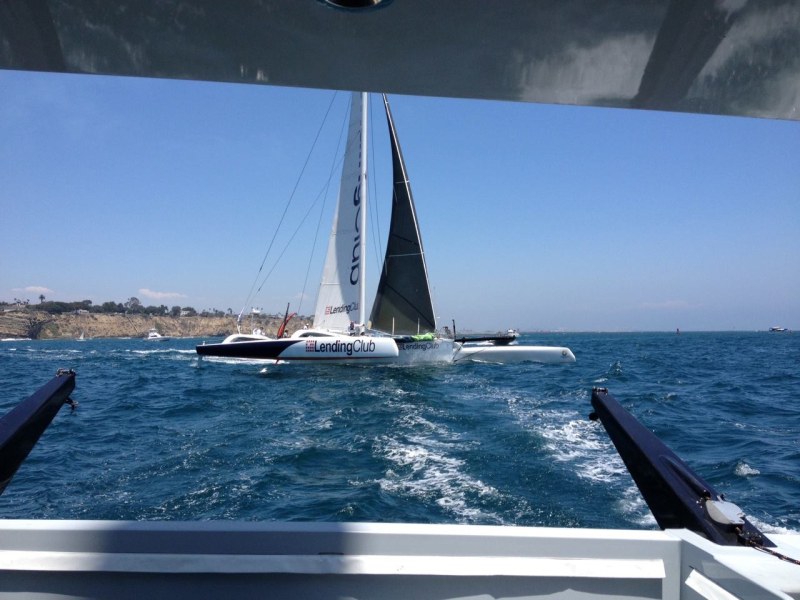
©2013 Latitude 38 Media, LLC
Only two other boats in the 58-boat fleet turned in 24-hour runs in excess of 400 miles. They were the Volvo 70 Maserati from Italy, which turned in 423 miles, and the 100-ft Ragamuffin 100 from Australia, which turned in 412 miles. Maserati stands first in Class 1 while Ragamuffin is last in Class 1.
The entire fleet did quite well yesterday except for Classes 7 and 8, which had enjoyed such a great getaway from the coast. Matt Brooks’ classic S&S 52 Dorade from the St. Francis YC continues to lead those two divisions, but has plummeted in fleet from 1st to 15th. If you lose the good wind, you lose your position.
It’s the classic ultralight sleds in Class 3 that own the top three spots in fleet. Roy P. Disney’s Andrews 70 Pyewacket, now 17 years old, is in first; James McDowell’s rarely beaten and even older Santa Cruz 70 Grand Illusion is in second; while Per Peterson’s San Diego-based Andrews 68 Alchemy is in third. With none of these sleds coming within 100 miles of the 66-ft cruising cat Phaedo‘s 24-hour run, one has to wonder if any West Coast sled owners are going to go over to the dark side. Of course, there is the issue of Phaedo costing about 10 times as much as any of the sleds in the top three spots.
Anyway, it’s a great TransPac, so be sure to follow the progress on their website.
The First Two-Boat AC72 Race
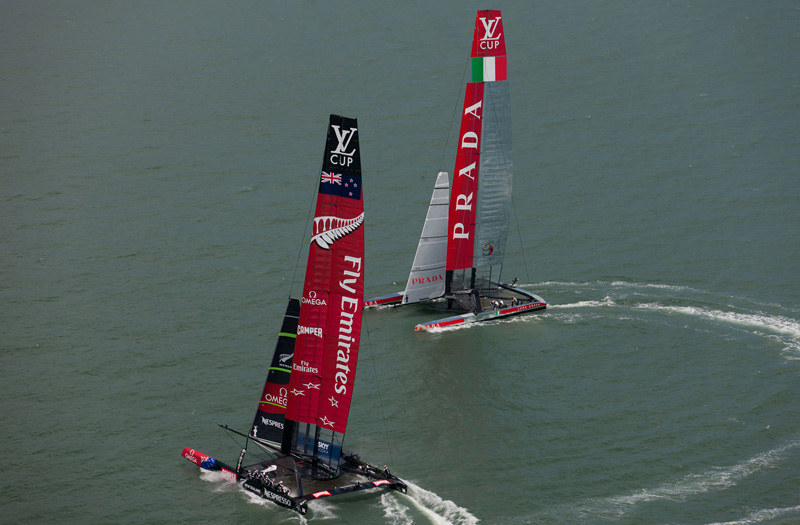
Saturday’s Louis Vuitton race between Emirates Team New Zealand and the Italian Luna Rossa team was the first-ever battle between two AC72s, so it was much anticipated. Having shared a "design package," the two 72s are more similar than the boats of the third challenger, Artemis Racing, or the defender, Oracle Team USA.
As many expected, the well-honed Kiwi team, with Dean Barker at the helm, easily controlled the start. And the Kiwis continued to pull away on each of the seven legs on the way to a five-minute plus victory on the 15.47-mile course. The wind blew between 17 and 20 knots, and provided ideal sailing conditions.
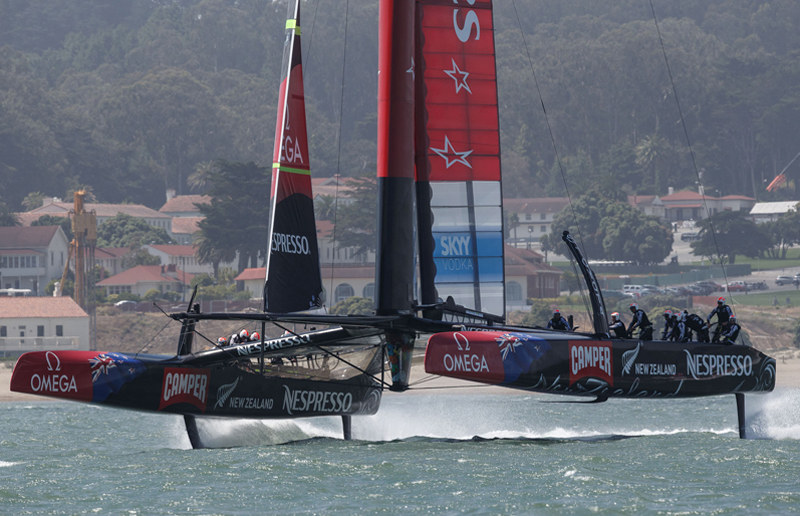
The Kiwis recorded a top speed of 42.33 knots, which was a little over two knots faster than Luna Rossa’s top speed. The Kiwis were able to consistently point higher. Both boats looked spectacular while foiling.
The next two-boat race won’t be until July 21, as the Swedish Artemis Racing team still doesn’t have its boat ready.
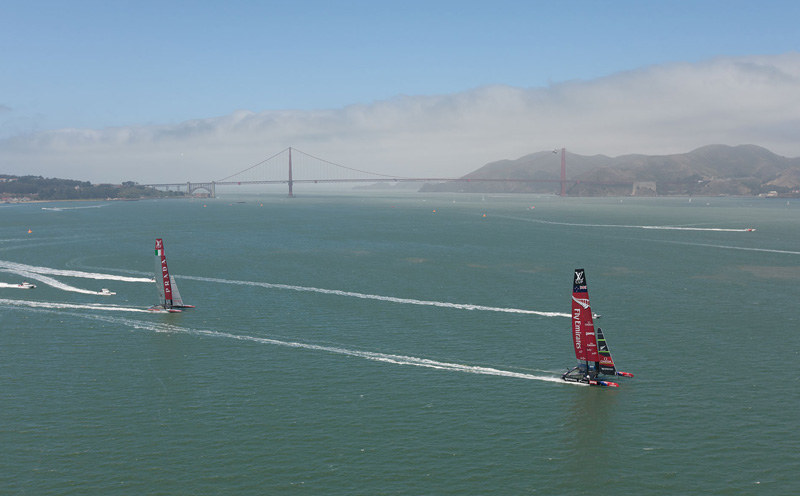
Those are the facts. We’re interested in your thoughts and impressions on: 1) The first AC72 vs. AC72 race; 2) AC72s as match racing boats; 3) whether this will be a successful America’s Cup. Extra credit for those of you who watched the race in person. Email Richard.
How Thrifty Can You Be?
Somali Pirates Convicted in Quest Case
The murder of four cruisers off Oman in 2011 aboard the sailing yacht Quest substantially raised the stakes for sailors wanting to access the Mediterranean. Previously, the modus operandi of pirates operating in that area was to hold sailors hostage for ransom, but spare their lives. In the aftermath of the Quest incident, very few cruisers have dared to transit the Gulf of Aden en route to the Red Sea and the Med.
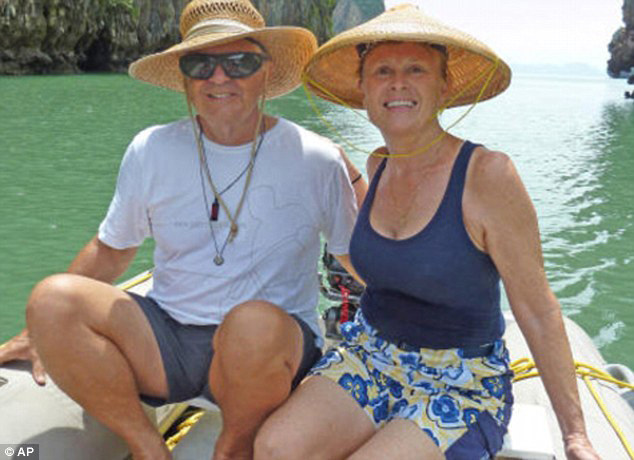
According to international news sources, three Somalis involved in the attack were convicted early last week of piracy, kidnapping and murder — 26 counts in all — and could face the death penalty when the sentencing phases are completed later this month.
Aboard the Marina del Rey-based, 58-ft Quest on the night of the boarding were owners Scott and Jean Adam, and their friends from Seattle, Phyllis Macay and Robert Riggle. The pirates’ stated intention was to sail the sloop to Somalia, but that plan was foiled when the U.S. Navy’s USS Sterett intercepted them. After four days of attempts to negotiate, Navy SEALs raided the boat, killing two Somalis and capturing 13 others. The four Americans had already been shot.
Although few if any cruising boats are attempting to cross the Gulf of Aden these days, the International Maritime Bureau recently reported an 80% drop in piracy in 2012 within the Gulf of Aden region. The organization says there is now more piracy taking place off the west coast of Africa than the east.
